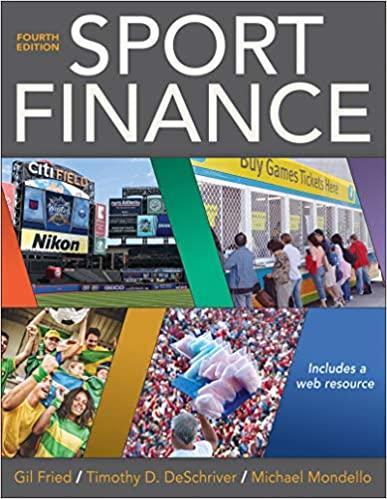Answered step by step
Verified Expert Solution
Question
1 Approved Answer
Question 5 Please. Part IV. Construction of Feasible Investment Opportunity Set and the Efficient Frontier 1. Consider two securities for a potential portfolio inclusion: E(r1)=25%,


Question 5 Please.
Part IV. Construction of Feasible Investment Opportunity Set and the Efficient Frontier 1. Consider two securities for a potential portfolio inclusion: E(r1)=25%, E(r2)=10%,0,=75%,02=25%, P12 Draw all feasible investment combinations given these two risky assets in a plane of {Op, E(rp)} in Excel for five cases: (1) P12 =1, (2)P 12 = 0.2, (3) P12 = -0.2, (4) P12 = -1. What does the feasible set look like? How about the efficient frontier? 2. Consider three securities for a potential portfolio inclusion: Expected Returns Asset A Asset B Asset C 0.05 0.1 0.15 Asset A Asset B Asset C Return Covariance Matrix Asset A Asset B Asset C 0.04 0.02 0 0.02 0.1 0.06 0 0.06 0.16 Draw all feasible investment combinations given these three risky assets in a plane of {Op, E(rp)} in Excel for two cases: (1) Short-selling is allowed, (2) Short selling is prohibited. What does the feasible set look like? How about the efficient frontier? 3. Construct a portfolio which has the expected return of 14% and resides on the efficient frontier generated from Q2 in Part IV in these two cases. How do you construct such a portfolio and what is its return variance? 4. Given a risk-free rate of 3%, how do you construct the optimal risky portfolio, the tangency portfolio between the efficient frontier generated from Q2 in Part IV and the capital allocation line extending from the risk-free rate? 5. (Continue in Q2) Suppose Company B becomes a rival to Company C in the market due to M&A and thus the covariance changes from +0.06 to -0.06. How does it change the outlook of the feasible investment opportunity set? How will this change affect your solution for Q4? Part IV. Construction of Feasible Investment Opportunity Set and the Efficient Frontier 1. Consider two securities for a potential portfolio inclusion: E(r1)=25%, E(r2)=10%,0,=75%,02=25%, P12 Draw all feasible investment combinations given these two risky assets in a plane of {Op, E(rp)} in Excel for five cases: (1) P12 =1, (2)P 12 = 0.2, (3) P12 = -0.2, (4) P12 = -1. What does the feasible set look like? How about the efficient frontier? 2. Consider three securities for a potential portfolio inclusion: Expected Returns Asset A Asset B Asset C 0.05 0.1 0.15 Asset A Asset B Asset C Return Covariance Matrix Asset A Asset B Asset C 0.04 0.02 0 0.02 0.1 0.06 0 0.06 0.16 Draw all feasible investment combinations given these three risky assets in a plane of {Op, E(rp)} in Excel for two cases: (1) Short-selling is allowed, (2) Short selling is prohibited. What does the feasible set look like? How about the efficient frontier? 3. Construct a portfolio which has the expected return of 14% and resides on the efficient frontier generated from Q2 in Part IV in these two cases. How do you construct such a portfolio and what is its return variance? 4. Given a risk-free rate of 3%, how do you construct the optimal risky portfolio, the tangency portfolio between the efficient frontier generated from Q2 in Part IV and the capital allocation line extending from the risk-free rate? 5. (Continue in Q2) Suppose Company B becomes a rival to Company C in the market due to M&A and thus the covariance changes from +0.06 to -0.06. How does it change the outlook of the feasible investment opportunity set? How will this change affect your solution for Q4Step by Step Solution
There are 3 Steps involved in it
Step: 1

Get Instant Access to Expert-Tailored Solutions
See step-by-step solutions with expert insights and AI powered tools for academic success
Step: 2

Step: 3

Ace Your Homework with AI
Get the answers you need in no time with our AI-driven, step-by-step assistance
Get Started


